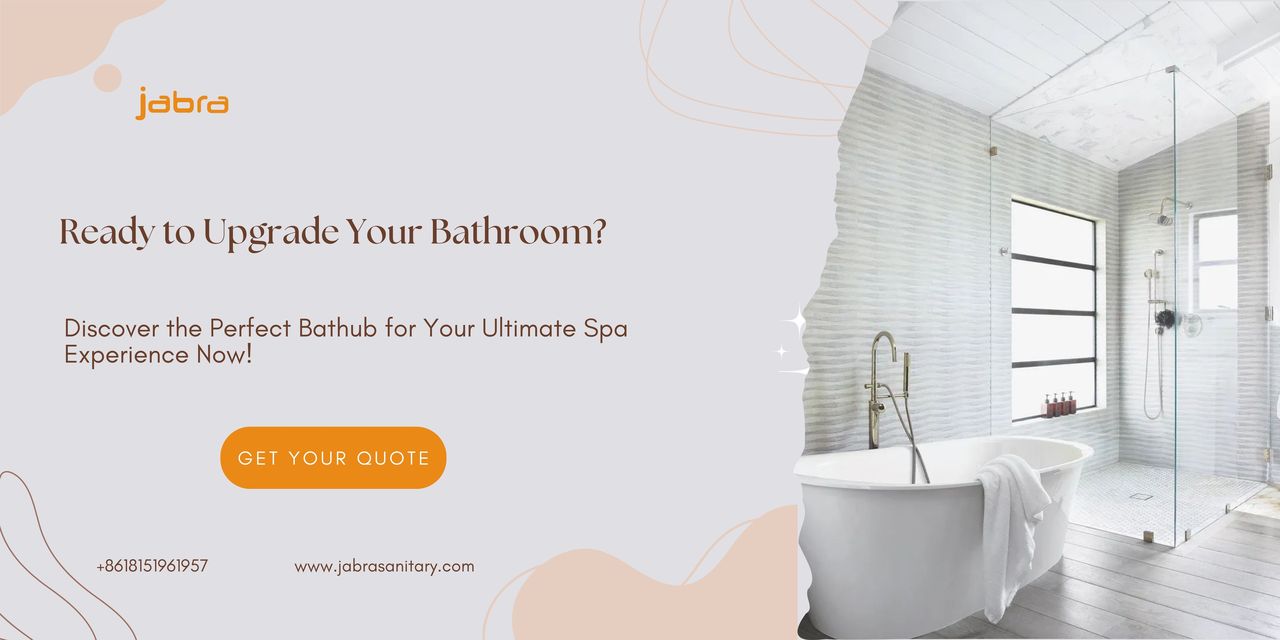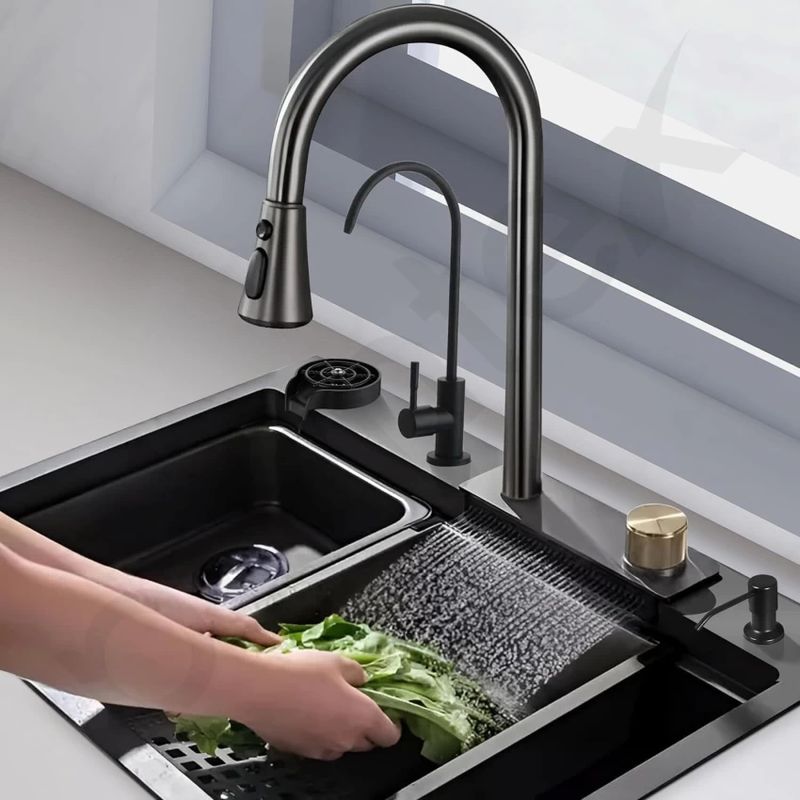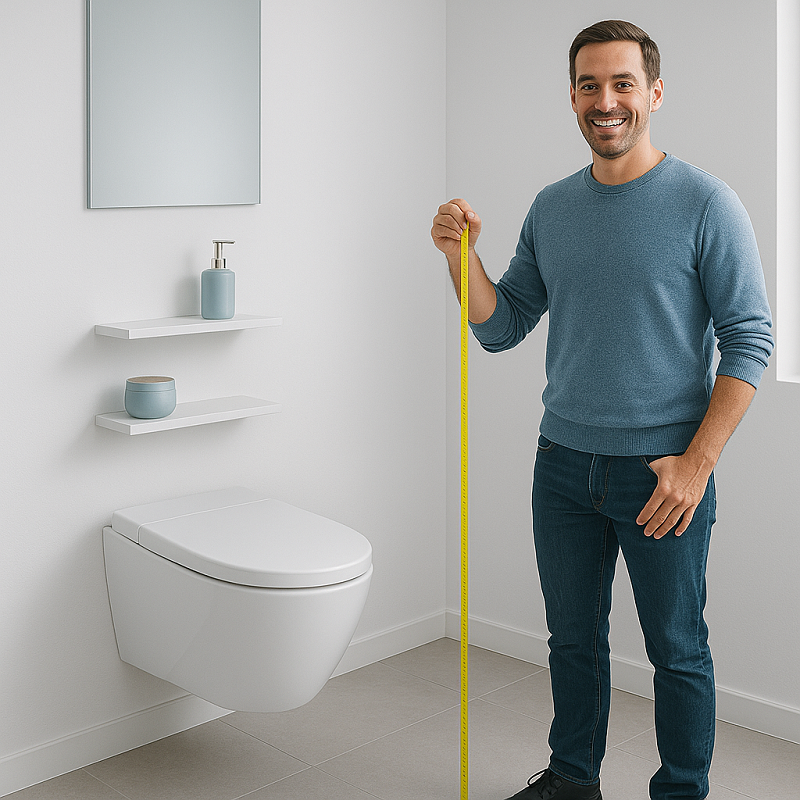 English
English
Jabra Sanitary is a sanitaryware supplier offering toilets, sinks, faucets, bathtubs, etc., at competitive prices. If you're a distributor, wholesaler, or project contractor, get a quote today!
 $23.9 Limited-time Offer
$23.9 Limited-time Offer Consignment Policy
Consignment Policy 20 Years of Experience
20 Years of Experience
Did you know that 60% of homeowners prioritize deep soaking in bathroom remodels? Imagine sinking into a bathtub so deep, you can fully submerge your entire body for the ultimate relaxation experience.
In this guide, we'll walk you through everything you need to know about deep bathtubs, from what makes them special to the different types, sizes, and materials available. We'll also share tips on how to choose the perfect one for your home, explore their benefits, and provide maintenance advice to keep them in top shape.
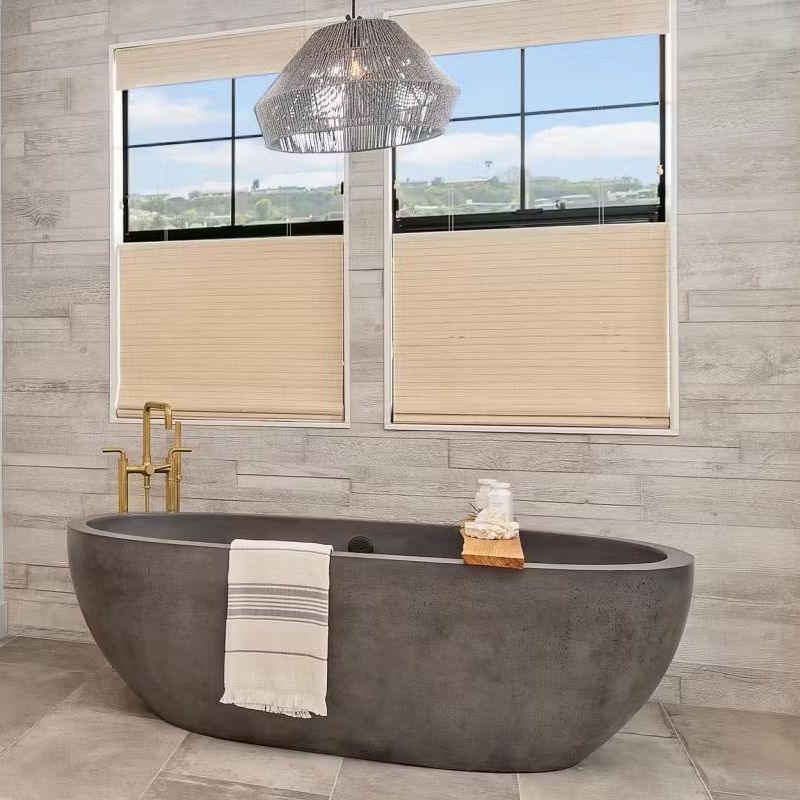
Table of Contents
What Defines a Deep Bathtub?
Types and Sizes of Deep Bathtubs
Benefits of Choosing a Deep Bathtub
Popular Materials for Deep Bathtubs and Their Pros & Cons
How to Choose the Right Deep Bathtub: Things to Consider
Deep Bathtubs for Specific Needs
Maintenance and Care Tips for Deep Bathtubs
FAQs
Conclusion
What Defines a Deep Bathtub?
Ever wondered what makes a bathtub "deep"? It's not just about how much water it holds—it's about how much of us can sink into that warm, relaxing soak!
According to the NKBA guidelines, a deep tub is usually defined by its depth, which ranges from 18 to 36 inches. Some custom ones even go deeper than that!
But it's not just about depth. Deep bathtubs come in all sorts of styles to fit our bathrooms and tastes. No matter the style, these tubs are built to maximize relaxation without taking over our entire bathroom.
Types and Sizes of Deep Bathtubs
Choosing the right deep bathtub starts with understanding the different types and sizes available.
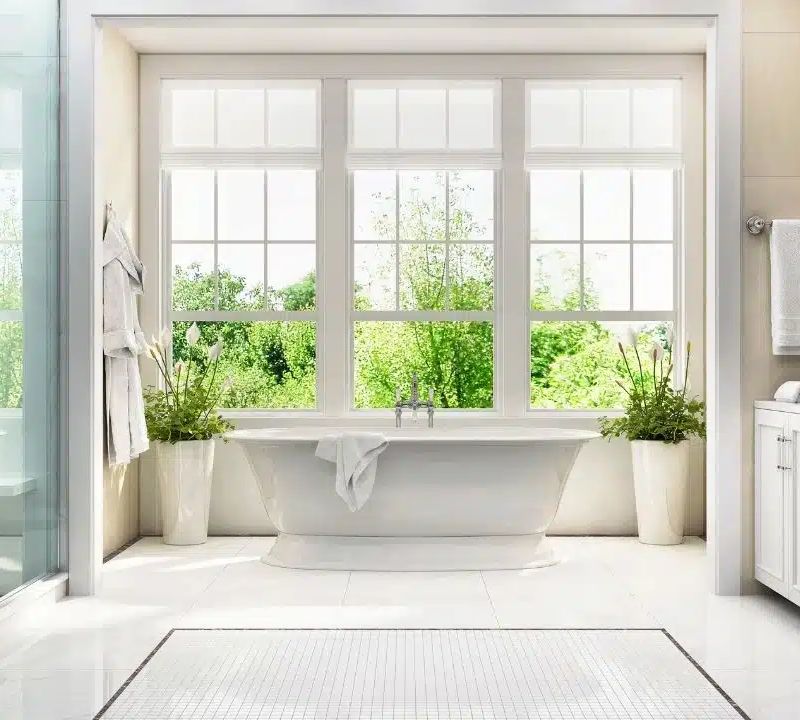
Japanese Soaking (Ofuro) Tubs
- Description: Compact and deep, these tubs are designed for upright soaking, inspired by traditional Japanese bathing culture.
- Typical Dimensions: 36–48 inches long, 30–36 inches wide, and 24–36 inches deep.
- Benefits: Ideal for small spaces, offers a unique cultural experience, and allows for full-body immersion.
- Considerations: May not be as comfortable for taller individuals, and the upright position might take some getting used to.
Freestanding Deep Tubs
- Description: Standalone tubs that can be placed anywhere in the bathroom, often serving as a focal point.
- Typical Dimensions: 60–72 inches long, 30–40 inches wide, and 20–24 inches deep.
- Benefits: Aesthetic appeal, versatile placement, and a luxurious look.
- Considerations: Requires more floor space, can be pricier, and may need additional plumbing work.
Built-In Deep Tubs
- Description: Designed to fit into an existing alcove or drop-in space, offering a seamless look.
- Typical Dimensions: 60–72 inches long, 30–36 inches wide, and 18–24 inches deep.
- Benefits: Space-efficient, blends with existing bathroom design, and often more affordable.
- Considerations: Limited placement options and installation might require professional help.
Deep Wall-In Tubs
- Description: Installed against a wall, offering a modern, sleek appearance.
- Typical Dimensions: 60–72 inches long, 30–36 inches wide, and up to 24 inches deep.
- Benefits: Space-saving, contemporary look, and easy to integrate with existing plumbing.
- Considerations: Requires a wall for installation, and might not be as visually striking as freestanding options.
Corner Deep Tubs
- Description: Fits snugly into a corner, maximizing space in smaller bathrooms.
- Typical Dimensions: 48–60 inches long, 48–60 inches wide, and 18–24 inches deep.
- Benefits: Space-efficient, great for small bathrooms, and can add a unique design element.
- Considerations: Limited to corner placement, and might have less interior space for soaking.
Custom Deep Tubs
- Description: Tailored to specific dimensions, designs, or materials to meet unique needs.
- Typical Dimensions: Varies based on customization.
- Benefits: Perfect fit for unusual spaces, personalized design, and unique features.
- Considerations: Higher cost, longer lead times, and potentially complex installation.
Benefits of Choosing a Deep Bathtub
Choosing a deep bathtub isn't just about adding a stylish piece to your bathroom—it's about transforming your daily routine into a relaxing, spa-like experience.
Full-Body Immersion
One of the biggest perks of a deep bathtub is the ability to fully submerge your body. You can sink in up to your shoulders, covering more of your body than a standard tub. Studies show that full-body immersion reduces stress hormones by 25%.
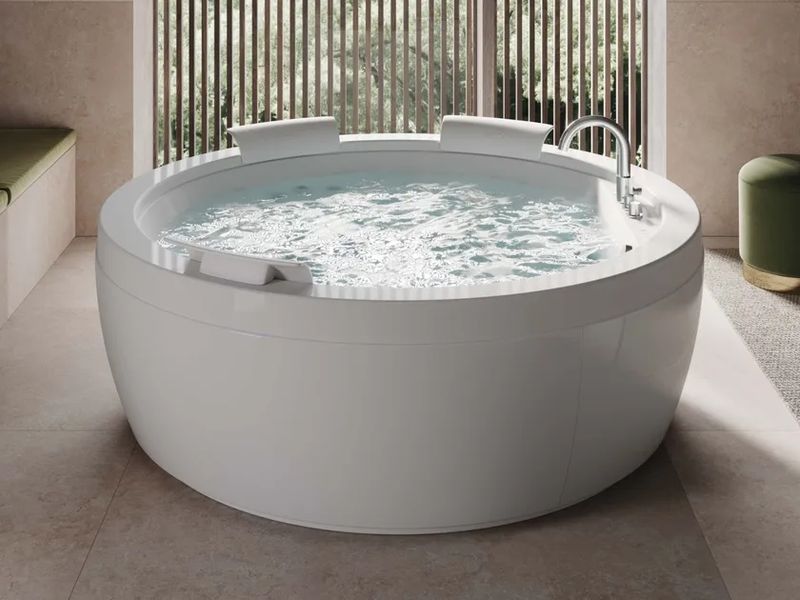
Luxury and Comfort
Deep bathtubs bring a touch of luxury to your bathroom. Their elegant designs, whether freestanding or built-in, can make your space feel like a high-end spa.
Plus, the extra depth adds comfort, allowing you to stretch out or sit upright without feeling cramped. It's the perfect spot to enjoy a long, peaceful soak after a busy day.
Versatility
These tubs come in various styles and sizes, so you can find one that fits your bathroom and lifestyle. Whether you have a small space or a large one, there's a deep bathtub for you. Some even come with extra features like whirlpool jets or built-in seats, making them versatile for different needs.
Heat Retention
Deep bathtubs are great at keeping water warm for longer. This means you can enjoy a longer soak without the water cooling down too quickly, making your bath even more relaxing. Cast iron retains heat 30% longer than acrylic.
Aesthetic Appeal
A deep bathtub can be a stunning focal point in your bathroom. With sleek designs and materials like copper or wood, they add a unique, stylish touch. Whether you prefer a modern look or something more traditional, a deep bathtub can enhance your bathroom's overall vibe.
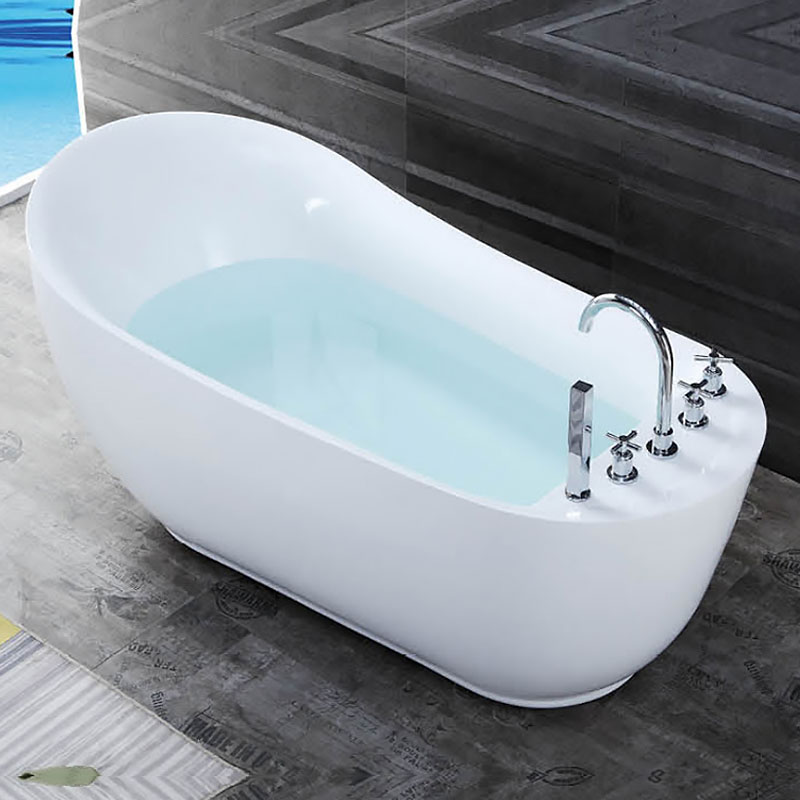 Ads
Ads
Large Deep Soaking Bathtub
Here is the Large Deep Soaking Bathtub Manufacturer Y04, designed to elevate your bathing experience with unmatched comfort and style. The large soaking tub features an ergonomic backrest with a curved design, ensuring a relaxing and supportive soak that aligns perfectly with your body's natural contours.
Popular Materials for Deep Bathtubs and Their Pros & Cons
When we're picking out a deep tub, one of the biggest decisions we face is choosing the right material.
It's not just about looks—though that's a big part of it—it's also about how long the tub will last, how easy it is to clean, and how cozy it feels when we soak.
Here's a quick look at how these materials stack up based on the National Association of Home Builders:
Material |
Pros |
Cons |
Cost Range |
|---|---|---|---|
Acrylic |
- Lightweight and easy to install - Budget-friendly - Keeps water warm - Lots of shapes and sizes |
- Scratches easily - May fade over time - Feels less solid than heavier options |
$500 - $2,000 |
Cast Iron |
- Super tough and long-lasting - Holds heat like a champ - Timeless style - Scratch-resistant |
- Heavy (needs strong floors) - Pricey - Not many color choices |
$1,000 - $5,000 |
Copper |
- Naturally germ-resistant - Stunning, fancy look - Built to last - Gets a cool patina with age |
- Costs a lot - Needs regular polishing - Loud when water hits it |
$2,000 - $10,000 |
Stone Resin |
- Sleek and modern vibe - Great heat retention - Tough against scratches - Lots of finish options |
- Heavy (might need floor support) - Expensive - Can be slippery |
$1,500 - $6,000 |
Wood |
- Gorgeous, natural feel - Eco-friendly choices - Keeps water warm - Fully customizable |
- Needs sealing and care - Can get damaged by water if neglected - High price tag |
$2,000 - $8,000 |
How to Choose the Right Deep Bathtub: Things to Consider
So, we've covered what makes deep bathtubs special, their types, sizes, benefits, and materials. Now, it's time to figure out how to pick the perfect one for your bathroom.
You've got to think about practical things like space, budget, and how it fits into your life.
Measure Your Space
First up, grab a tape measure! Picture this: squeezing past a giant tub to reach the sink? No thanks! Aim for at least 30 inches of clear space around it.
Sketch a quick floor plan to see how it'll sit in your bathroom. This helps avoid any "oops" moments during installation.
Consider Bathroom Layout
Next, think about how the deep standard-size tub fits into your bathroom's flow. Where you place it can change the whole vibe. A freestanding tub in the middle screams luxury, but it might block access to other fixtures. A built-in tub in a corner saves space but could feel tight.
Check where your doors, windows, and plumbing are too. Renovating? You've got more wiggle room. Just updating? Work with what's there.
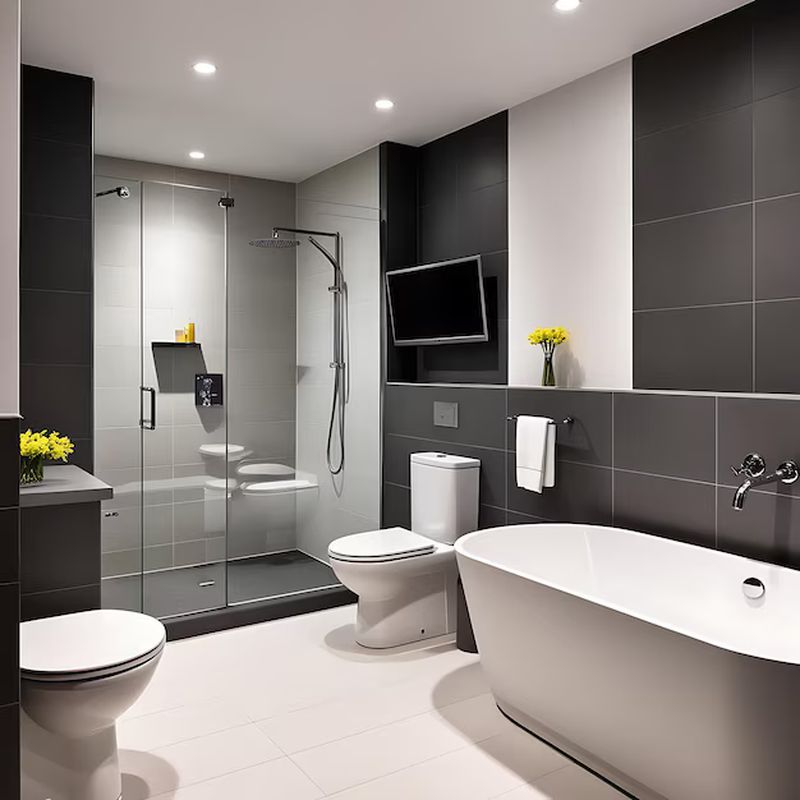
Evaluate Material Durability
Remember those materials we talked about? Now's the time to decide what works for you. Want something that lasts forever?
Cast iron or stone resin are super tough, but they're heavy and cost more. Okay with replacing it later? Acrylic is light and budget-friendly, though it might scratch or fade.
Also, think about upkeep—wood tubs need sealing, while stainless steel resists rust with minimal effort. Pick what fits your timeline and maintenance vibe.
Choose Tub Type & Style
What's your style—bold or subtle? Freestanding tubs make a statement and are easier to install, but they might need plumbing tweaks.
Built-ins blend in and feel sturdy, though they limit design options. Match the deep tub to your bathroom's look—modern, classic, or whatever you're into.
Check Water Capacity & Efficiency
Deep tubs hold more water—sometimes up to 250 gallons! That's awesome for soaking, but it can hike up water and heating bills.
Check your water heater—can it handle the load? If you're eco-minded, look for efficient designs or plan shorter soaks. Some tubs even have built-in heaters to keep water warm without refilling.
Assess Installation Requirements
Installation can get tricky. You might need a plumber, especially for fancy setups with jets or relocated pipes.
Waterproofing and drainage are musts to avoid leaks. Heavy tubs—like cast iron—need strong floors, so double-check with an engineer if you're unsure.
Also, think accessibility: grab bars or a lower step-in height can make it safer for everyone.
Examine Floor Load Capacity
Heavy tubs mean heavy loads. Cast iron or stone resin can weigh hundreds of pounds empty—add water and you, and it's a lot!
If your bathroom's upstairs or older, ensure the floor can take it. A quick chat with a pro can save you from big problems later.
Think About Comfort & Ergonomics
This is your relaxation zone, so make it comfy! Look for a sloped back, armrests, or a non-slip surface. Tall? Pick a longer tub. Hate high steps? Go for a lower edge.
Some tubs have seats or jets for that spa feel. Test a few in a showroom if you can—it's worth it.
Select Additional Features
Now, the fun stuff! Want jets for a whirlpool vibe? Air massage? Maybe chromotherapy lights or a sound system? These extras level up your soak but bump up the price and upkeep.
Decide what you'll use—jets for massage lovers, or skip them for a quiet, simple bath.
Match Drain and Plumbing
Techy but vital: the deep tub's drain has to line up with your plumbing. Drains can be left, right, or center—check yours before buying.
Replacing a tub? Match the old drain spot to save hassle. Some tubs need special overflow systems too. Not sure? Ask a plumber.
Set Budget & Be Aware of Hidden Costs
Tubs range from a few hundred bucks to thousands. Installation can add $1,000–$5,000, especially with plumbing changes or floor work. Then there's water bills and maintenance—like jet cleaning.
Set a budget that covers it all, and keep a cushion for surprises.
Take Brand Reputation & Warranty Into Account
Finally, check out the brand. Good reviews mean quality you can trust. Look at warranties too—some offer 10 years, which is a great sign. It's your safety net if something goes wrong. Dig into online reviews or ask around for the best picks.
Deep Bathtubs for Specific Needs
We know that every bathroom—and every bather—has unique requirements. That's why we're excited to explore deep bathtubs designed for specific needs.
Small Spaces
If your bathroom feels more cozy than spacious, don't worry—deep tubs for small spaces can still fit into your life! The trick is picking a design that maximizes your space without crowding the room.
Here is a comparison:
Feature |
Japanese Tub |
Corner Tub |
|---|---|---|
Space Efficiency |
A compact and deep design is ideal for smaller bathrooms. |
Utilizes corner space, saving wall area in tight rooms. |
Accessibility
We all deserve a bathroom that's safe and comfy, right? If you or a loved one has limited mobility, a deep bathtub with accessibility features is essential. Deep tubs are luxurious, but stepping over a high edge can be tough. That's where thoughtful design comes in.
Walk-in tubs are a game-changer. With a door you can step through, there's no need to climb over the side—just walk in, shut the door, and fill the tub for a deep soak. It's perfect for making bathing safer and more enjoyable.
Add grab bars for extra support—they're great for steadying yourself when getting in or out, or even while sitting. And don't skip non-slip surfaces; they cut down on slip risks, which is key when water levels are higher.
Luxury Features
Ready to turn your bath into a spa-like getaway? Luxury features can elevate your deep bathtub experience to pure bliss.
The jets are the stars here. They blast water or air to massage your body, easing tension and sore muscles. Whirlpool jets deliver a powerful water massage, while air jets offer a softer, bubbling vibe—perfect for a home spa day.
Pair that with a built-in heater, and you've got warm water for as long as you like. No more chilly baths cutting your relaxation short!
Ever heard of chromotherapy? It's all about colored lights that set the mood—blue for calm, red for a boost. It's a simple yet fun way to unwind. You could also add sound systems for music, aromatherapy for soothing scents, or even a TV for soaking and streaming.
Eco-Friendly Options
Love the planet as much as a good soak? Eco-friendly bathtubs let you relax with a clear conscience. Start with deep tubs that use less water—some designs give you a deep soak with fewer gallons, saving water and the energy to heat it.
Look for energy-efficient heaters to keep electricity use low, which is kinder to the environment and your wallet. Materials make a difference too—choose deep tubs from recycled acrylic, sustainably sourced wood, or durable stone resin that lasts longer, reducing waste.
For a next-level green option, consider a water recirculation system. It filters and reuses water, so you can soak longer without refilling.
Maintenance and Care Tips for Deep Bathtubs
We know you're thrilled to enjoy your deep bathtub, and we're here to help you keep it in tip-top shape for years of relaxing soaks.
A little maintenance goes a long way—not only does it keep your tub sparkling clean, but it also ensures its longevity and preserves that luxurious bathing experience.
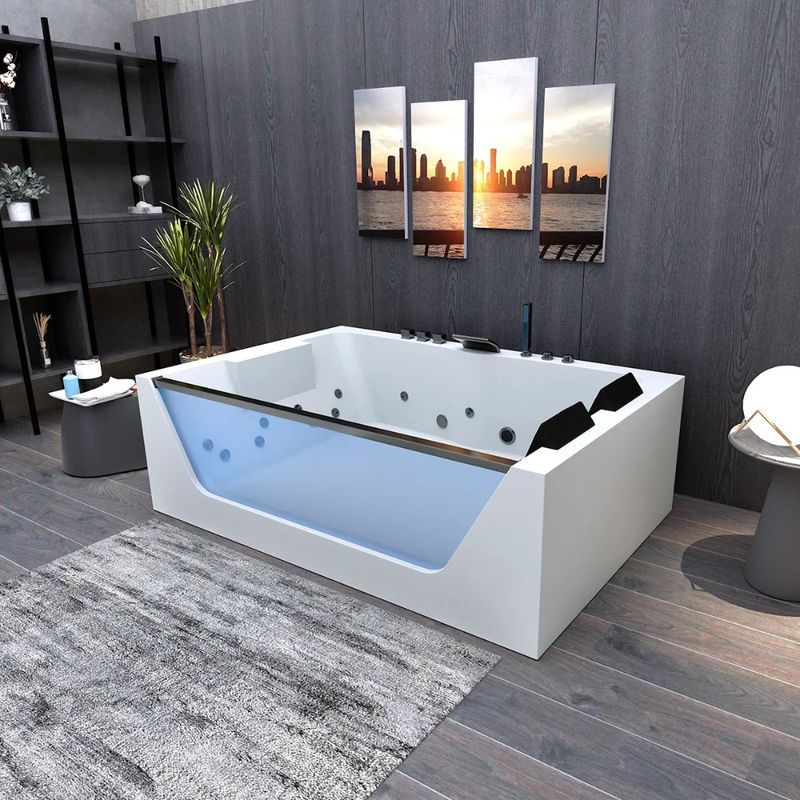
Material-Specific Care
Deep bathtubs come in a variety of materials, each with its own charm and care requirements. Here's how to keep the most common types looking their best:
Acrylic
Clean them with mild soap and a soft cloth—harsh or abrasive cleaners can scratch the surface. If you notice a scratch, a light polish designed for acrylic can often smooth it out. Avoid chemical solvents; they'll dull the finish over time.
Cast Iron
Use a non-abrasive cleaner and a soft sponge to prevent scratches. Since these deep tubs are heavy, take care not to bang tools against them while cleaning.
Copper
To maintain their warm glow, polish them regularly with a copper-specific cleaner. If you prefer the aged patina look, let it develop naturally—just know the color will evolve. Steer clear of acidic cleaners, as they can damage the finish.
Stone Resin
Clean with a mild detergent and a soft cloth. For water spots or soap scum, a 50/50 vinegar-water solution works like a charm—just rinse well after. Use Bar Keepers Friend for stone resin.
Wood
Keep the sealant in good condition to protect against water damage—check the manufacturer's recommendations for the right product. Use gentle soap for cleaning, and avoid letting water sit too long.
Regular Cleaning
Consistency is key to a pristine deep bathtub. Here's a simple routine to follow:
Daily
After each soak, rinse the tub with warm water to wash away soap, oils, and grime. A quick swipe with a squeegee can also prevent buildup!
Weekly
Once a week, give your tub a deeper clean. Use a mild, non-abrasive cleaner and a soft sponge, paying extra attention to the waterline and corners where dirt hides.
Monthly
Every month, inspect the tub's surface for scratches, chips, or stains. Address these issues right away to prevent bigger problems.
Check for Leaks
Deep bathtubs hold a lot of water, so a small leak can quickly become a major headache. Here's how to stay proactive:
Regular Inspections
Every few months, examine the tub's seals, drains, and overflow areas for wear or looseness. If possible, peek underneath for damp spots or water stains—early signs of trouble.
Listen and Observe
While filling the tub, listen for dripping or look for water pooling in odd places.
Test the System
Fill the tub and let it sit for a while. If the water level drops without use, you might leak to investigate.
Water Quality
The water you bathe in can impact your tub's appearance and performance. Hard water, rich in minerals, can leave deposits that dull the finish or clog jets. Here's how to tackle it:
Water Softener
If hard water is a constant issue, consider a water softener. It reduces mineral buildup, making cleaning easier and extending your tub's life.
Vinegar Cleaning
For existing deposits, spray a vinegar-water mix (equal parts) on affected areas, let it sit for a few minutes, then rinse.
Faucet Filter
If your water carries sediment or rust, a filter on the faucet can keep it out of the tub.
FAQs
We know you might have some questions about deep bathtubs, so we've gathered the most common ones and answered them for you.
Are freestanding tubs deeper?
Freestanding tubs can be deeper than other types, but it depends on the model. Some are designed specifically for deep soaking, offering 24+ inches of depth.
How deep is an extra-deep tub?
Extra deep tubs typically have a depth of 20 inches or more.
Why are Japanese bathtubs so deep?
Japanese bathtubs are built for deep soaking, reflecting Japan's bathing culture. The bath is used for relaxation and warming the body after washing. The water is designed to cover your shoulders, offering a therapeutic and immersive experience that melts away stress.
Can you put a deep tub in a small bathroom?
Yes, you can fit a deep tub for small spaces, but you'll need to pick the right size and shape. Corner tubs or Japanese-style soaking tubs are excellent choices—they're smaller in footprint but still provide that deep soak.
How deep should a Japanese soaking tub be?
Japanese soaking tubs are typically at least 22 inches deep, though some go even deeper. The ideal depth depends on your height and preference, but the aim is to have the water cover your shoulders when seated.
Conclusion
We've covered all the essentials about deep bathtubs, giving you the full scoop on why they're a game-changer for your bathroom. Prioritize depth, material, and space when choosing.
Where to find the best deep bathtubs? Explore our curated selection of deep tubs at Jabra Sanitary. We offer an impressive lineup of high-quality deep bathtubs tailored to every style and need.







